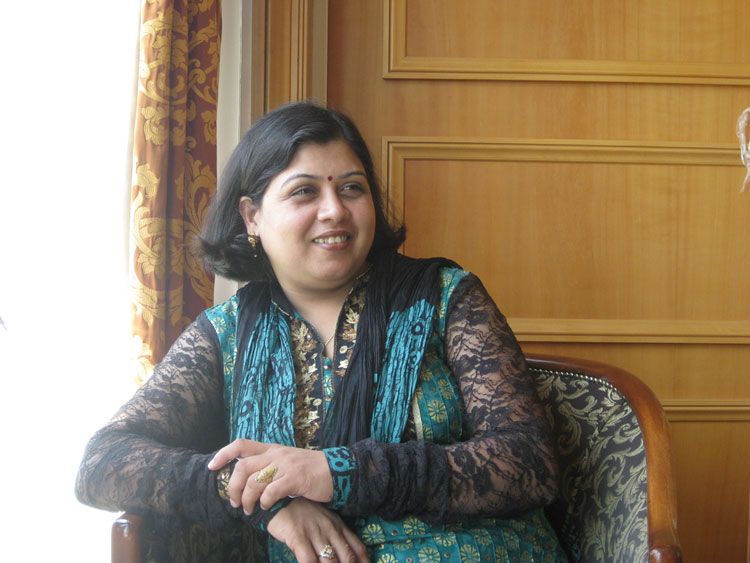 The multibillion-dollar valuations of Indias new tech stars, Flipkart and Snapdeal, are no pricing bubble, but a signal that the countrys technology boom has begun. The next five years will see a flurry of technology innovation that will transform India as much as cellphones have over the past 15 years. This will be enabled by the availability of low-cost smartphones, the digital identity that Indias Aadhar project has provided to hundreds of millions of people who lacked any documentation, and a host of exponential technology advances. A billion Indians will be joining the global economy during this decade.
The multibillion-dollar valuations of Indias new tech stars, Flipkart and Snapdeal, are no pricing bubble, but a signal that the countrys technology boom has begun. The next five years will see a flurry of technology innovation that will transform India as much as cellphones have over the past 15 years. This will be enabled by the availability of low-cost smartphones, the digital identity that Indias Aadhar project has provided to hundreds of millions of people who lacked any documentation, and a host of exponential technology advances. A billion Indians will be joining the global economy during this decade.
There is a lot for Indian entrepreneurs to learn from Silicon Valley. But the bigger opportunities are for them to leapfrog it by solving the problems of the many rather than of the few. The same infrastructure lacuna that enabled India to create Aadhaar lack of all technological legacy to have to worry about offers it an opportunity to implement changes unarguably for the public good and to show the world how to create an entirely new digital infrastructure in areas such as the following:
Electronic commerce: Flipkart and Snapdeal have largely focused on consumer products for the well-to-do. The real market opportunity is to address the needs of the people who will soon be coming online. New marketplaces need to be built for artisans in villages so they can design and create custom crafts for customers worldwide; apps are needed by which fruit sellers, sweet shops and restaurants can showcase their products and take orders from neighborhood customers; local merchants need the tools with which to provide the same types of one-hour delivery services that Amazon and Google are launching in American cities.
Sharing economy: Uber showed Indian entrepreneurs that app-based ride-sharing was practical even in Indias chaotic cities. But Uber, too, targeted elite, high-end customers. The bigger opportunities will be to share rides in three-wheelers, bicycle rickshaws, and buses. Technology can also facilitate hiring of workers in the informal economy laborers, technicians, maids, and painters through automation. Also needed are apps for tractor-sharing on farms, jhuggi rentals, bike sharing and seed swaps.
Health apps and devices: Inexpensive sensors can be connected to smartphones and tablets to result in medical devices that are as accurate as those that western hospitals use. That is what Kanav Kohol did with theSwastaya Slate, a health device with 33 sensors, for blood pressure, blood sugar, heart rate, blood haemoglobin, urine protein and diseases such as HIV, syphilis, dengue and malaria. Using this $800 device and the A.I.-based apps that come with it, health workers in Jammu and Kashmir are providing life-saving medical care to a population of 2.5 million people. Telemedicine can also connect people in remote villages to medical experts.
There are endless possibilities for entrepreneurs to transform Indias health-care system to provide medical care to billions of people in need, in India and abroad.
App-based automation of public services: Whether it be for booking railway tickets and monitoring train arrival times or for analyzing government productivity and efficiency data, virtually every aspect of government services could be improved through measurement, monitoring, and automation. Entrepreneurs can take a key role in modernizing governance by using technology and data to stem corruption.
Smart cities: Small, inexpensive, Internet-connected sensors, monitoring things such as traffic patterns, air quality, noise, radiation levels and water quality, can be used to manage pollution and waste, parking, traffic congestion, security and almost every other aspect of a citys functioning. Entrepreneurs can start building smart neighborhoods and then smart cities.
Education: No matter how hard the government tries, it will not be able to fix Indias public schools in time to educate the more than 100 million children in towns and villages with substandard educational facilities. The only solution for them rests in using technology.
The XPRIZE Foundation has launched a $15 million global competition to develop software that will enable children to teach themselves basic reading, writing and arithmetic. Already, there are tens of thousands of apps that can teach subjects such as history, geography, music, mathematics, and science. These need customization for regions and local languages, and adaptive learning platforms in order to tailor education to the needs of the student.
Agriculture: At a minimum, Internet-connected smartphones can be used to educate farmers on how to improve crop yields and minimize chemical usage. Social media can connect them with each other so that they can share experiences, and sensors can help monitor soil humidity and optimize watering. Supply chains can be improved, and on-farm diagnostic technologies can increase efficiency.
***
With Indias abundance of I.T. talent and its greater abundance of social and infrastructure problems its entrepreneurs have a unique opportunity to lead the world in innovation. I have little doubt that 2015 will be the launching point for Indias technology revolution.
Link to article on Washington Post’s website
| About Author | |

|
Vivek Wadhwa is Vice President of Innovation and Research at Singularity University; Fellow, Arthur & Toni Rembe Rock Center for Corporate Governance, Stanford University; Director of Research at the Center for Entrepreneurship and Research Commercialization at the Pratt School of Engineering, Duke University; and distinguished visiting scholar, Halle Institute of Global Learning, Emory University. He is author of ”The Immigrant Exodus: Why America Is Losing the Global Race to Capture Entrepreneurial Talent”–which was named by The Economist as a Book of the Year of 2012. Wadhwa oversees the academic programs at Singularity University, which educates a select group of leaders about the exponentially growing technologies that are soon going to change our world. These advances—in fields such as robotics, A.I., computing, synthetic biology, 3D printing, medicine, and nanomaterials—are making it possible for small teams to do what was once possible only for governments and large corporations to do: solve the grand challenges in education, water, food, shelter, health, and security. |
Website: http://wadhwa.com/2014/12/31/why-2015-will-be-the-year-of-indias-next-technology-revolution/
Disclaimer: Please use this channel at your own discretion. These articles are contributed by our users. We are not responsible or liable for any problems related to the utilization of information of these articles.













